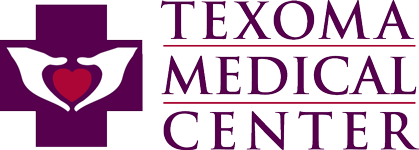Learn about symptoms, screenings and prevention to lower your risk of this common cancer.

Lung cancer is the second most common cancer in both men and women. Unfortunately, it often goes undetected until later stages of the disease when it has already started wreaking havoc on your body—only about 16% of lung cancer cases are caught early.
Although current and former smokers are most at risk, anyone can get lung cancer. That's why it's important to know the signs of the disease and to get screened if you qualify to do so. This may make it more likely that lung cancer will be detected at an early stage if you get it, when it's most treatable.
Symptoms
Although symptoms typically don't appear at the earliest stages, the most common symptoms when they do appear are:
- A persistent cough
- Coughing up blood or rust-colored spit
- Chest pain that is often worse with deep breathing, coughing or laughing
- Hoarseness
- Loss of appetite or unexplained weight loss
- Shortness of breath or wheezing
- Feeling tired or weak
- Recurrent infections such as bronchitis and pneumonia
If you have any of these symptoms, don't wait to see a doctor and ask about getting screened for lung cancer. The earlier lung cancer is diagnosed, the higher the odds of long-term survival after diagnosis.
Screening
Since lung cancer symptoms usually don't appear early, screening is the best way to get ahead of it. The recommended screening test is a low-dose CT (LDCT) scan. The American Cancer Society® recommends that people at high risk for lung cancer get this screening done yearly.
High-risk individuals need to meet all of the following criteria to qualify for screening:
- Be 50 to 80 years old and in fairly good health
- Currently smoke or have quit in the past 15 years
- Have at least a 20-pack-year smoking history
Smoking history is determined by multiplying the number of packs of cigarettes smoked per day by the number of years smoked. For example, if you smoked 1 pack a day for 20 years, you would qualify for this screening.
Prevention
It's not possible to completely prevent lung cancer, but there are things you can do to lower your risk. The number one thing is to stay away from all tobacco products, including cigarettes, cigars, pipes and e-cigarettes. If you currently smoke, it's never too late to quit. If you don't smoke, don't start. Also avoid second-hand smoke. Smoking is the leading preventable cause of lung cancer, causing 80-90% of all lung cancer deaths.
In addition to not smoking, a healthy diet with lots of fruits and vegetables may help reduce risk. Getting your home tested for radon and avoiding potential carcinogens (cancer-causing agents) at work are other ways to potentially lower your risk of developing lung cancer.
Copyright 2021 © Baldwin Publishing, Inc. All rights reserved. Health eCooking® is a registered trademark of Baldwin Publishing, Inc. Cook eKitchen™ is a designated trademark of Baldwin Publishing, Inc. Any duplication or distribution of the information contained herein without the express approval of Baldwin Publishing, Inc. is strictly prohibited.
Date Last Reviewed: September 8, 2021
Editorial Review: Andrea Cohen, Editorial Director, Baldwin Publishing, Inc. Contact Editor
Medical Review: Perry Pitkow, MD
Learn more about Baldwin Publishing Inc. editorial policy, privacy policy, ADA compliance and sponsorship policy.
No information provided by Baldwin Publishing, Inc. in any article is a substitute for medical advice or treatment for any medical condition. Baldwin Publishing, Inc. strongly suggests that you use this information in consultation with your doctor or other health professional. Use or viewing of any Baldwin Publishing, Inc. article signifies your understanding and agreement to the disclaimer and acceptance of these terms of use.
